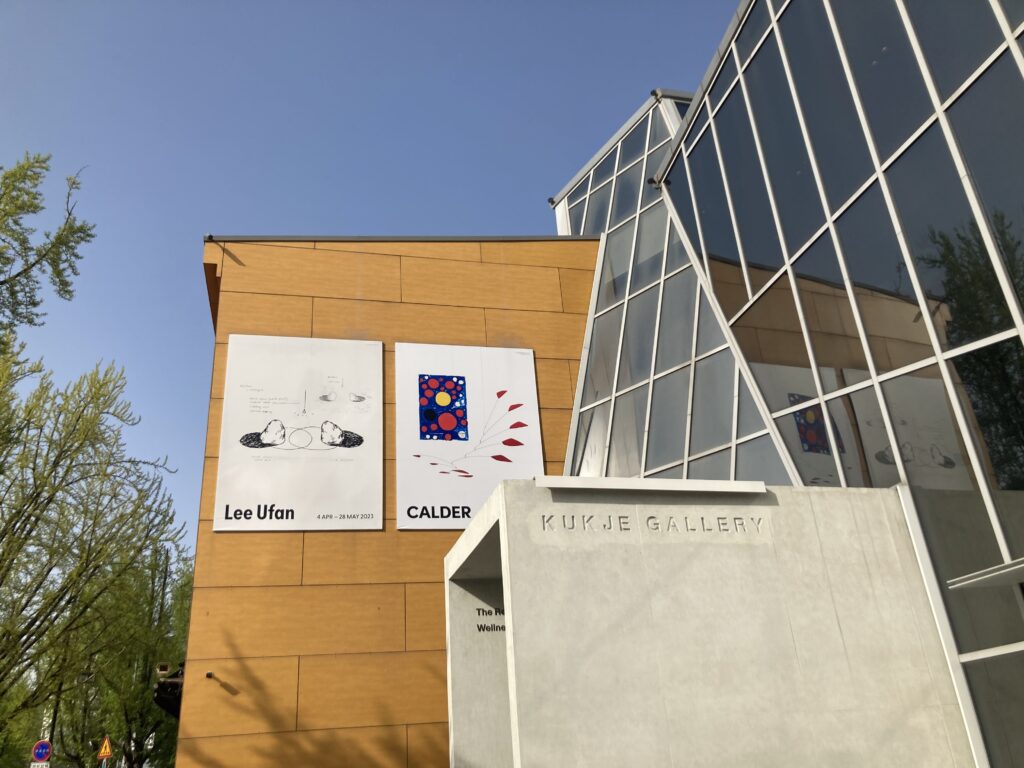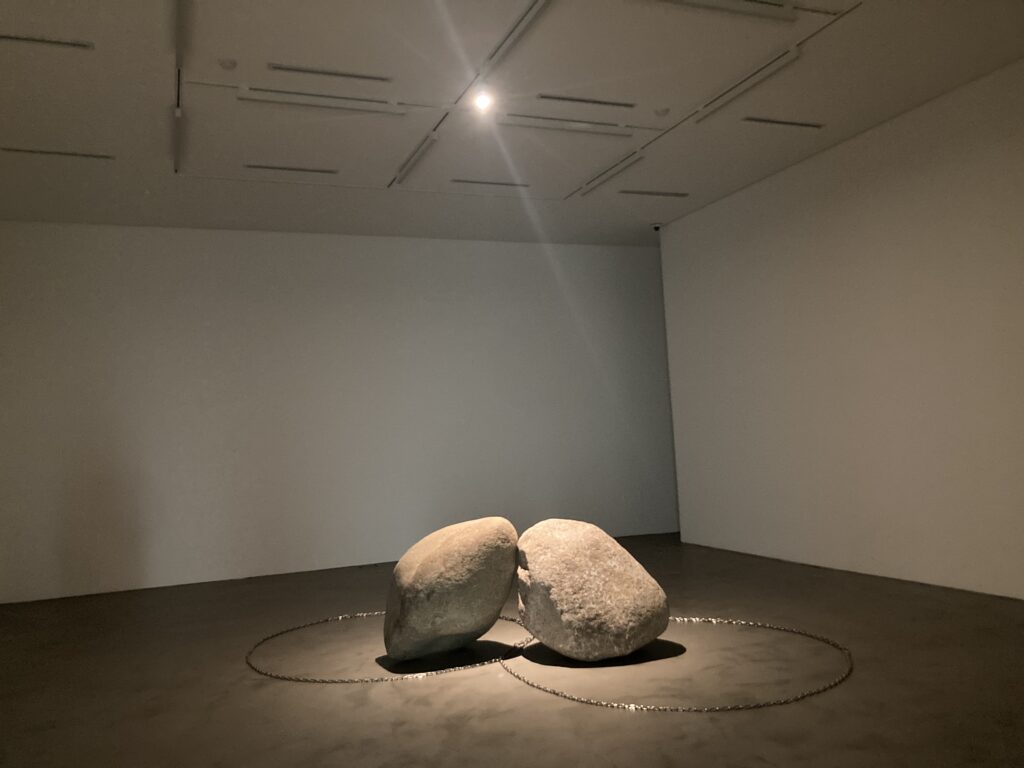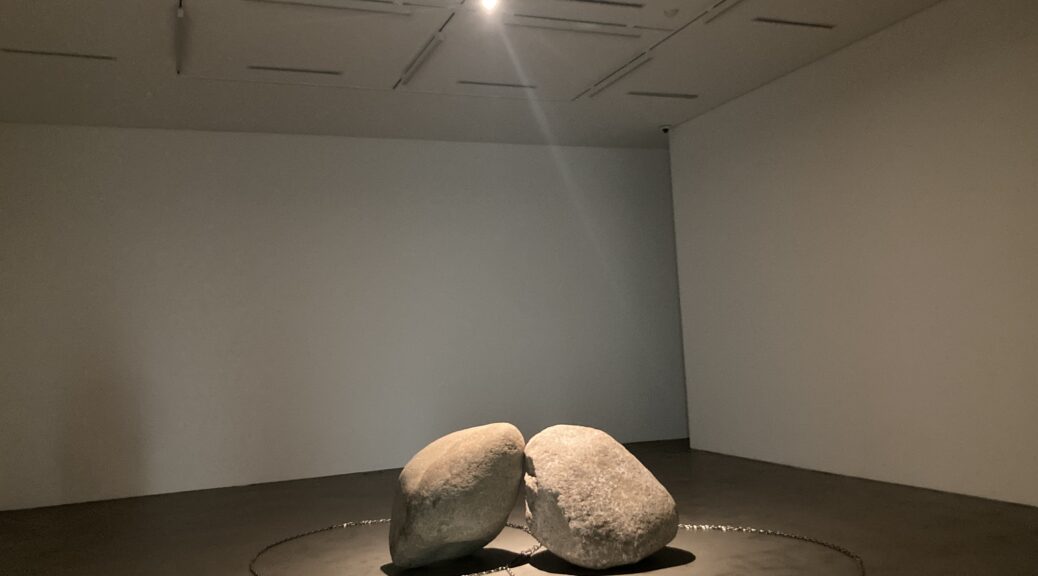Anthropomorphism works. When a car has a human schema (e.g., smiley face), people evaluate it positively (Aggarwal and McGill 2007). When a garbage bin has a human message (e.g., “feed me”), people follow it (Ahn, Kim, Aggarwal 2013). When an AR speaker has eyes or when an instruction manual depicts it like a baby, people become generous about its malfunction (Park and Joo 2018).
Historically, an object was anthropomorphize in one of two ways. On one hand, designers add the parts of the human body such as eyes and arms to an inanimate object. For instance, a tip jar has a smiley face, two arms, and two legs. On the other hand, marketers add a phrase describing that the object behaves like a human being. For instance, a garbage bin eats food or a mobile phone becomes stupid.
Today, I noticed another way to anthropomorphize an object, which can be employed by artists. They do not add something to an inanimate object directly; instead they ask us to actively imagine that inanimate objects animate. This is well demonstrated by the artwork, Relatum – The Kiss (2023) by Lee Ufan. We imagine two stones are two people and they are kissing each other.

Kukje Gallery is pleased to present a solo exhibition of Lee Ufan on view from April 4 to May 28, 2023. Lee titles all his scultures Relatum and often provides subtitles to hint possible associations without giving a clear interpretation. Relatum signifies a relation that is different from a readily definable term, relationship, but one that explores the artist’s interest in how individual elements of a work are in a fluid relationship. In this way, the viewer, who directly intervenes in the space of the work as a relatum-along with factors such as the stone representing nature and the steel plate representing industrial society-feels a part of the conversation between the two objects or is led to reflect on the idea of co-presence by observing their conversation.

Lee employes an anthropomorphic metaphor in Relatum – The Kiss (2023), capturing a moment of encounter. As can be inferred by its subtitle, two stones are making a point of encounter as if they are kissing, while two individual chains surrounding them overlap and cross each other, thereby creating a point of intersection. The center of the cirucualr chians leading toward the position of each stone evokes a strong sense of motion…


I wholeheartedly agree with the author’s opinion of a new form of Anthropomorphism in art. People are generally less resistant to objects that have been “appropriately” personified. I believe this is because of the physical similarities they perceive with themselves. In fact, we encounter personified objects in various media. Examples include talking and walking animals in the movie “Madagascar (2005)” and the stories of Aesop’s fables.
Anthropomorphism is not limited to human behavior or non-verbal living beings; it can also be seen in the personification of George Washington in the ceiling painting of the United States Capitol, surrounded by 13 women representing the original 13 states.
However, artists, especially contemporary artists, go beyond basic anthropomorphism and project their own opinions and appearances onto various objects. The author mentions this point in “Lee Ufan – Kiss (2023),” where the author talks about allowing room for interpretation for the audience and depicting human behavior indirectly.
In addition to these examples, I would like to discuss the works of Alexander Calder, which I observed at the “International Gallery” simultaneously. Alexander Calder is commonly known as the creator of mobiles, which refer to art that expresses objects hung from the ceiling. In Alexander Calder’s “Alexander Calder – Untitled,” I could sense anthropomorphism and a dynamic feeling. Calder expressed his hope that the audience would feel a sense of dynamic movement through his mobiles. I could feel the image of a swimming person through his artwork because the movement created by hanging from the ceiling resembled a human swimming in the sea. I also believe that the shadows created by the play of light had a significant impact on this effect. Conversely, I thought that the dynamic appearance of the air was also personified through the mobiles. The graceful flow of the air indirectly expressed resembled human dance. I thought it would be appropriate to add as an example the representation found in Calder’s artwork, which expresses a form of personification that is indirect rather than direct.